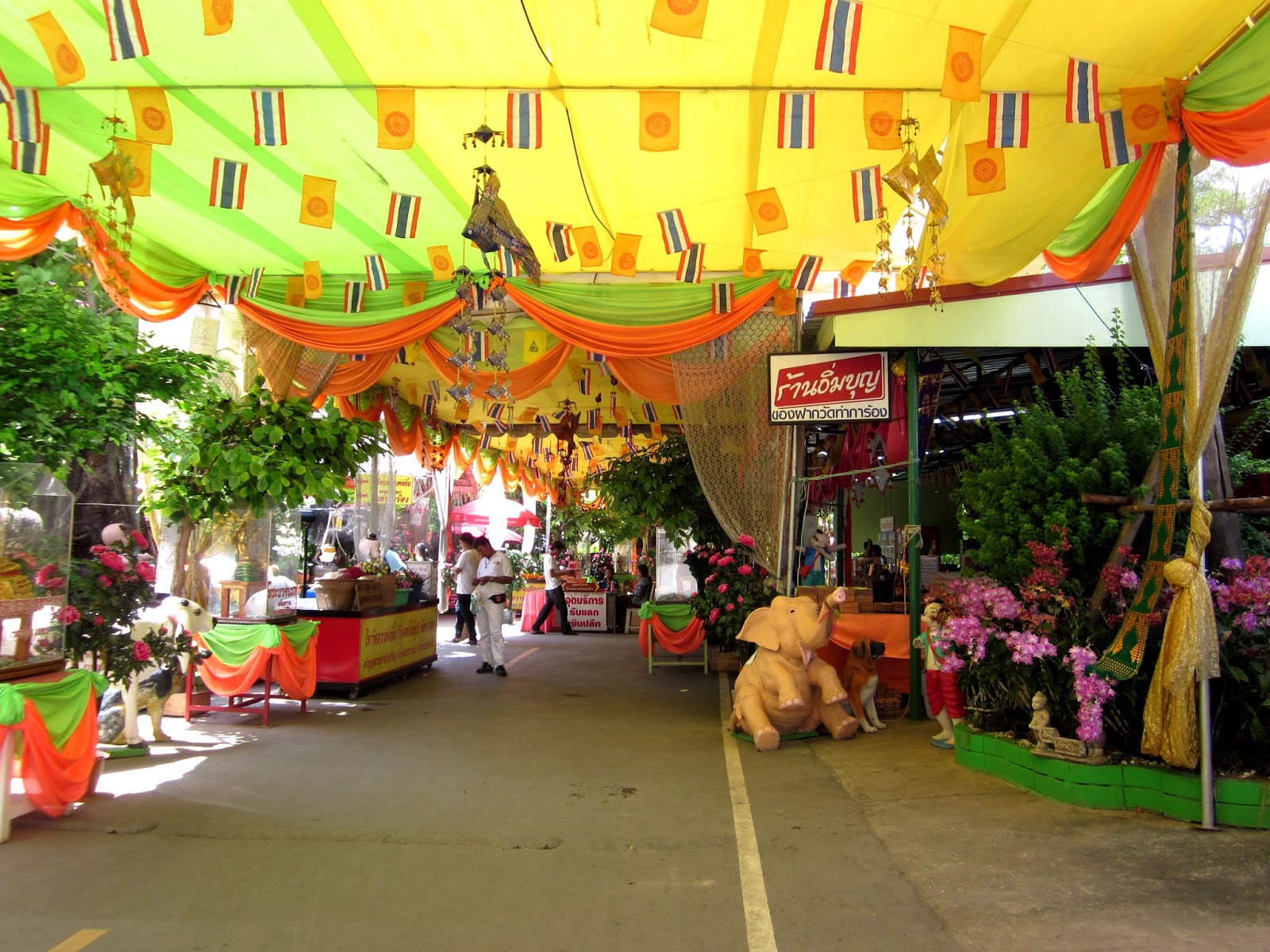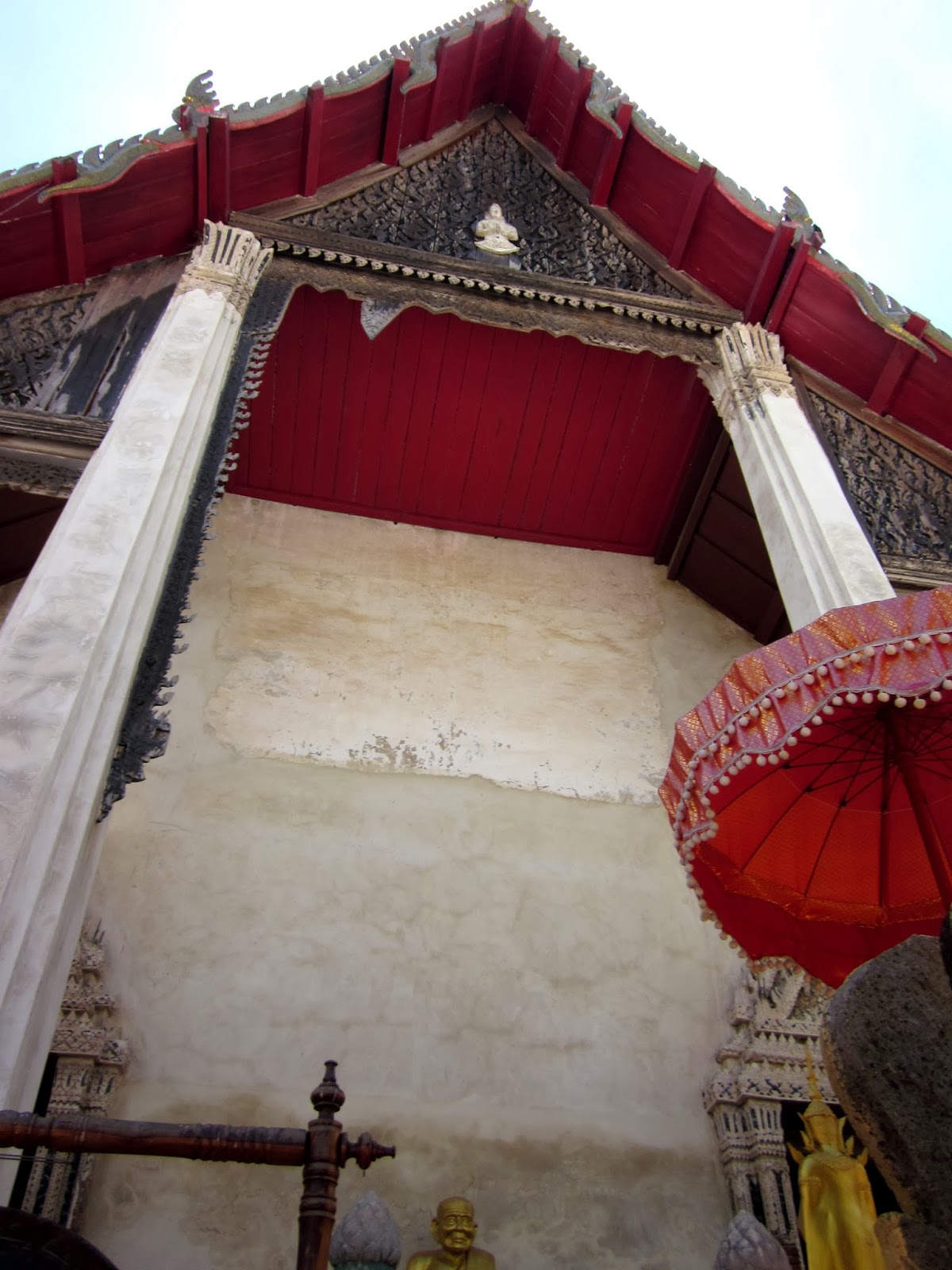Most of the tripadvisor community swears the Ayutthaya Floating Market is a horrible tourist trap.
Just before lunch time in the lovely rainy season, however, it was tourist free. Instead, it was mostly empty and the few busy parts were filled with Thai locals.
Part of the 'big let-down' is that tourists are expecting a traditional Thai floating market like the one in Bangkok. This is definitely nothing like Bangkok. Is it supposed to be? I don't know.
The Ayutthaya floating market is small but colorful. To get to the floating portion, you walk through a strange (for westerners) area that is something like a county fair, a garden park, an outdoor strip-mall and a church had a baby. Incidentally, there are also plastic babies. And ducks.
Out front, there are a few sundry vendors, the majority of whom sell Thai lottery tickets and offerings for the many Buddha and monk statues inhabiting the premises.
Some of the figures talk, asking for donations in Thai and shakily moving their bowls up and down. Or like the skeleton on the right, giving a traditional Thai greeting ("Sawadee krap") and attempting to touch his robotic hands to his plastic forehead.
There are an endless number of places to make donations, all of which have extensive signage in Thai. That's got to be for the tourists, eh Watson?
All the negativity about this place really irks me because while I was there, I mostly saw Thai locals worshiping and paying respects. I only stopped here to have lunch and, for that purpose, I recommend it. It was unique, fun and culturally interesting. (Plus cheap with surprisingly nice bathrooms - yes!)
Down a few shoddily nailed together planks is a floating pavilion, which small vendor boats line up against. As you peruse the food selection, dishes are prepared, grilled, sauteed and sold all from the small boats right in front of you.
 |
| Floating Market Food Vendors, Ayutthaya, Thailand Source: www.photos-thailand.com/ayutthaya/ |
A wide variety of traditional and local Thai foods are offered, as well as a few dishes from neighboring countries. Most of the food is 'street fare' style, perfect for getting to know the flavors of the region without spending a fortune.
 |
| One of the many food vendors, Floating Market, Ayutthaya, Thailand Source: Travel & Leisure Asia Blog |
There is lunch available for the fish too. Except the fish are a little more aggressive about getting their rainbow treats than I was about sampling the local fare.
Above the rickety boardwalks and clinking of cookware, nestled in a garden to the side of the carnival-mall-park-church area, there is a beautifully well-kept temple. From the surrounding promenade, you can hear worshipers and monks inside.
Naturally, my favorite part of the Ayutthaya floating market was neither the floating nor the market; it was this little traditional architecture gem.
Just because you're a tourist and have a bland experience somewhere (because you expected Ayutthaya to be like Bangkok), doesn't mean the place is 'horrible' and the locals 'built it to trap you'. This little red-roofed temple has been here awhile. And the Thai signage probably doesn't have a lot to do with you either.
Maybe you're a tourist. Maybe you're an unhappy tourist. But some places just have their own personality. The rest of the world isn't always what you expect.
Isn't that the point of traveling?
by Sarah Bond-Yancey
For more pictures of incredible Thailand, check out my travel albums.
















































